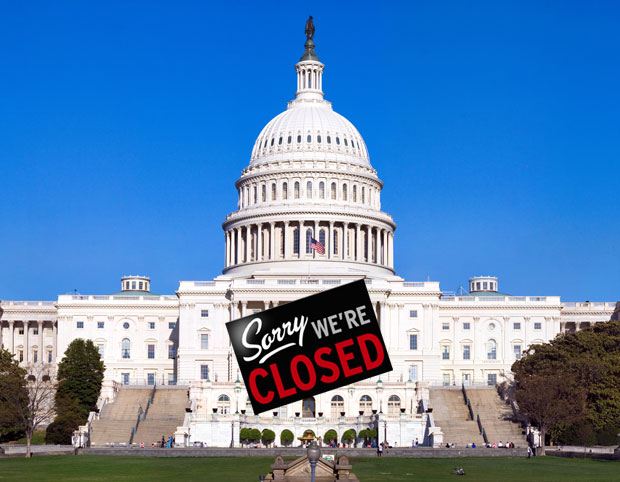Government Shutdown Explained
February 5, 2018
The phrase “government shutdown” is scary to say the least. Following the shutdown on January 19, 2018, through January 22, 2018, this term has been thrown around a lot, specifically in regards to its potential recurrence in the near future. Considering the average Stamford High School student doesn’t spend their time glued to the Cable-Satellite Public Affairs Network (C-SPAN), I have decided to demystify it and explain it in layman’s terms.
What is a government shutdown?
A government shutdown is the closure of all nonessential offices of the government due to disagreement over the federal budget for the upcoming fiscal year. Nonessential offices— national parks employees, for example— are furloughed, they stop working and stop getting paid. The essential offices— firefighters and policemen for example— just stop getting paid. In order for the government to resume, must pass all spending bills. Once a budget bill is passed and a compromise is reached, the government can resume function.
Why did the government shutdown happen?
Government shutdowns typically occur when Congress cannot agree on a federal budget on time. The most recent shutdown, beginning on January 19, 2018, and ending on January 22, 2018, occurred largely due to partisan controversy over the deal regarding the Deferred Action for Childhood Arrivals program, also known as DACA. Rather than remaining shutdown, Congress passed a continuing resolution (or CR) extending the deadline for passing a budget to February 8, 2018, and allowing for further negotiation. This apparent inability to draft a budget stems predominantly from a partisan clash: democrats wish to protect DACA’s place in the new budget while Republicans hope to prevent the controversy from fracturing their party’s stance on immigration. Both parties assessed these goals to be worth the impact of a government shutdown.
What is the impact of a government shutdown?
The most recent shutdown prior to this one occurred in 2013 for 16 days over Obamacare. That shutdown reportedly cost the government $2 billion in employee furloughs alone, and prevented the creation of 120,000 private sector jobs. The current shutdown has not proven itself to be any better. Aside from the administrative costs it takes to actually shut down the government, economists estimate the shutdown to have shaved $2 billion from the nation’s Gross Domestic Product (GDP) each day according to David Wessel, director of the Hutchins Center on Fiscal and Monetary Policy at the Brookings Institution. This may seem catastrophic, but as the shutdown was only three days long— two of which were the weekend— the economic impact was a blip on the radar. This is not to say that the blip does not come with ramifications; as a result, the military production schedule is experiencing delays and, as with the 2013 shutdown (which left 25,000 federal employees still awaiting compensation for furloughs as of January, 2018), federal paychecks have also been delayed. Citizens are immediately impacted by the closure of national parks and institutions such as the Smithsonian, and halting of passport and
other legal document processing. Many contract workers employed by the government also felt the brunt of the government shutdown with layoffs due to stunted projects.
Do the ends justify the means?
Outside of the Democratic party, whose unwavering support of DACA prompted the shutdown, most individuals involved, which is to say the majority of the United States government, say no. Critics of the shutdown, including Republican Congressman Erik Paulsen, condemn the decision as irresponsible. In an interview published January 22, 2018, Paulsen told MPR (Minnesota Public Radio) News that “[government shutdown] doesn’t work. It doesn’t make sense. We should deal with the DACA issue when that deadline is approaching. We have time to do that.” He asserted that “it’s most important to make sure the military is getting paid.” The true danger is the Pandora’s box created by reintroducing government shutdown as a valid political tool. This one, three-day shutdown followed by a CR has introduced the temptation and possibility for the budget conflict to ramble into a series of shutdowns and CRs.
Where do we go from here?
February 8, 2018, is a moment of truth for partisan negotiations over the DACA deal. There are three prevailing possible outcomes: no decision is reached and the cycle of shutdowns and CRs continues, the democrats fold and a long-term CR is passed on the budget—allowing
for further negotiation leading up to the decision on DACA in early March, but weakening Democrats’ position in Congress—or the Republicans fold, which would accentuate the fissures in the party’s stance on immigration and the handling of the Federal budget
in general. In any case, it must be remembered that government exists for the benefit of the majority of its citizens.




